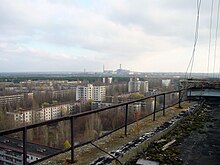Just when you thought there could be no more Chernobyls, this report caused the reindeer to stampede.
Russian officials: numerous shortcomings at nuclear plants near Finland
Inspection report leaked to Norwegian newspaper
The difficulties emerge in a report by the Russian state-owned nuclear energy company Rosatom, which was acquired by the Norwegian newspaper Aftenposten.
The paper wrote on Sunday that many of the problems apply to Russian nuclear installations in general. However, the greatest risks are in old reactors located in areas near Finland and Norway – on the Kola Peninsula and the St. Petersburg region.
In several countries, including Russia, nuclear power plants have undergone “stress tests” following the nuclear accident which occurred at the Japanese plant in Fukushima in March.
Keijo Valtonen, an official at the Radiation and Nuclear Safety Authority Finland (STUK), expects that the results of the inspections conducted in Russia will be available in Finland soon.
 |
||
 |
||
|
In addition to the earthquake risk the Rosatom report warns of inadequate reserve cooling systems in Russian plants. Nuclear fuel storage facilities were also shown to be inadequate in some places, and there is a shortage of trained maintenance personnel and inspectors in Russia.
The report lists a total of 31 shortcomings.
According to Valtonen, judging from the deficiencies that were listed, the Russians have made an open assessment of the problems. Norwegian experts also feel that the assessments are reliable.
The report also mentions the Sosnovy Bor nuclear power plant near St. Petersburg, which has been a cause for concern in Finland for some time.
The Sosnovy Bor plant uses the same reactor technology as what was used in Chernobyl, where the world’s worst nuclear accident took place in 1986. A mitigating factor in the matter is that the area is not especially prone to earthquakes.
Nuclear safety has also been assessed in Finland, in the wake of Fukushima. According to Valtonen, the risk reports made at the national level are to be given over to international assessment. “If shortcomings are noticed, drawing conclusions is a matter for each individual country.”
Previously in HS International Edition:
![]() Finnish nuclear industry says Japan scenario unlikely in Finland (14.3.2011)
Finnish nuclear industry says Japan scenario unlikely in Finland (14.3.2011)
![]() Steam leak brings Unit 1 of Loviisa Nuclear Power Plant to controlled shutdown (21.2.2011)
Steam leak brings Unit 1 of Loviisa Nuclear Power Plant to controlled shutdown (21.2.2011)
![]() Finnish nuclear authority investigates problems in online reporting on Japan (15.3.2011)
Finnish nuclear authority investigates problems in online reporting on Japan (15.3.2011)
See also:
![]() People in Sosnovyi Bor discuss constructing new nuclear reactors (8.2.2007)
People in Sosnovyi Bor discuss constructing new nuclear reactors (8.2.2007)
Links:
![]() Radiation and Nuclear Safety Authority Finland (STUK)
Radiation and Nuclear Safety Authority Finland (STUK)
:}
Unfortunately more Tomorrow.
:}









 By Richard Black Environment correspondent, BBC News
By Richard Black Environment correspondent, BBC News